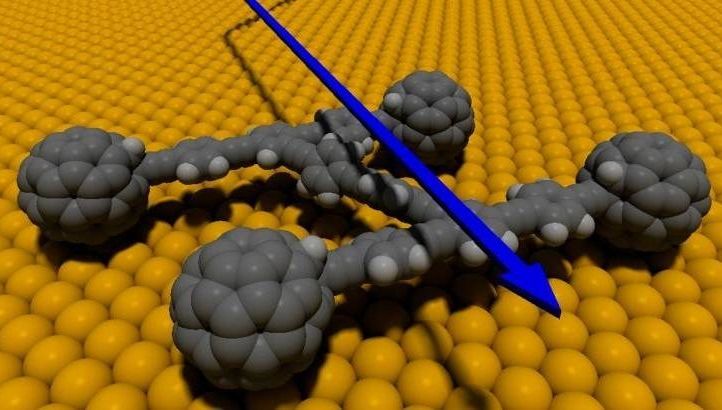Page 11164
May 10, 2016
Offer-value Cells in Brain Helps in Making Everyday Decisions
Posted by Karen Hurst in category: neuroscience
A small brain structure is used for everyday decisions.
Choosing what shirt to buy, what to order for lunch, how much to save, are some of the few decisions we make. These are prompted by a group of neurons.
May 10, 2016
Early life stress accelerates maturation of key brain region in male mice
Posted by Karen Hurst in category: neuroscience
Scientists studying how stress in early childhood affects the brain have new evidence from a study in male mice that a key region, the hippocampus, appears to mature faster.
May 10, 2016
Modeling, simulation help optimize chemotherapy to combat brain tumor
Posted by Karen Hurst in categories: biotech/medical, neuroscience
I would rather discovering something to permanently and is truly effective to replace Chemo.
Pharmacologic modeling and simulation has been used for the first time to translate promising laboratory results into a phase I clinical trial for pediatric brain tumor patients.
May 10, 2016
Gene Therapy to Treat Progressive Vision Loss
Posted by Karen Hurst in categories: biotech/medical, health

University of Oxford scientists have developed a gene therapy that has shown promise in treating choroideremia, a rare disorder that causes progressive vision loss, mostly in males.
Doctors tested the treatment method on six patients with choroideremia by injecting numerous healthy genes into the eye to replace missing ones in the retina. The purpose of this therapy is to hinder or prevent loss of sight, according to Oxford’s announcement.
Results varied for each participant. Two patients experienced a big improvement in vision that lasted for four years, but a decline occurred in the other untreated eye. Three separate patients maintained their vision in the treated eye over four years whereas the sixth recipient who was given a lower dose succumbed to vision decline in both eyes.
Continue reading “Gene Therapy to Treat Progressive Vision Loss” »
May 10, 2016
Common nanoparticle has subtle effects on oxidative stress genes
Posted by Karen Hurst in categories: biotech/medical, food, nanotechnology
A nanoparticle commonly used in food, cosmetics, sunscreen and other products can have subtle effects on the activity of genes expressing enzymes that address oxidative stress inside two types of cells. While the titanium dioxide (TiO2) nanoparticles are considered non-toxic because they don’t kill cells at low concentrations, these cellular effects could add to concerns about long-term exposure to the nanomaterial.
Researchers at the Georgia Institute of Technology used high-throughput screening techniques to study the effects of titanium dioxide nanoparticles on the expression of 84 genes related to cellular oxidative stress. Their work found that six genes, four of them from a single gene family, were affected by a 24-hour exposure to the nanoparticles.
The effect was seen in two different kinds of cells exposed to the nanoparticles: human HeLa cancer cells commonly used in research, and a line of monkey kidney cells. Polystyrene nanoparticles similar in size and surface electrical charge to the titanium dioxide nanoparticles did not produce a similar effect on gene expression.
May 10, 2016
Games Worth Checking Out on HTC Vive
Posted by Sean Brazell in categories: entertainment, finance, virtual reality

Virtual Reality is finally happening after years of existing only in science fiction or as underwhelming prototypes. While Oculus Rift is certainly a big deal due to the financial support from Facebook, there are other compelling options on the market. One particularly impressive bit of hardware is the HTC Vive, which features a variety of great games and immersive motion controls.
The below video showcases several of the most exciting games on the HTC Vive, which headset purchasers will be ready to play as long as they have a gaming PC that meets the minimum requirements to be VR ready.
Elegance, speed, comfort and sustainability – fusing to a new form of traveling, defining a completely new form of freedom. This is the Lilium Jet, the world’s first electric vertical take-off and landing jet.
Start your journey from anywhere and travel faster and more elegantly than in your boldest dreams. 400 km/h top speed – 500 km range. The future of aviation begins now.
May 10, 2016
Researchers Find Unexpected Magnetic Effect
Posted by Karen Hurst in categories: computing, electronics, particle physics, quantum physics
I reported on this finding which the National Labs in Oak Ridge TN published yesterday. This is MIT’s own report on the research and discovery of new material called bismuth selenide (Bi2Se3) with an ultrathin layer of a magnetic material, europium sulfide (EuS). I know that is a mouth full. However, the end result will be that it could lead to a new generation of electronics, spintronics, or quantum computing devices. Definitely a big move forward in bridging QC into all things that use daily.
A new and unexpected magnetic effect has taken researchers by surprise, and could open up a new pathway to advanced electronic devices and even robust quantum computer architecture.
The finding is based on a family of materials called topological insulators (TIs) that has drawn much interest in recent years. The novel electronic properties of TIs might ultimately lead to new generations of electronic, spintronic, or quantum computing devices. The materials behave like ordinary insulators throughout their interiors, blocking electrons from flowing, but their outermost surfaces are nearly perfect conductors, allowing electrons to move freely. The confinement of electrons to this vanishingly thin surface makes then behave in unique ways.
But harnessing the materials’ promise still faces numerous obstacles, one of which is to find a way of combining a TI with a material that has controllable magnetic properties. Now, researchers at MIT and elsewhere say they have found a way to overcome that hurdle.
Continue reading “Researchers Find Unexpected Magnetic Effect” »















